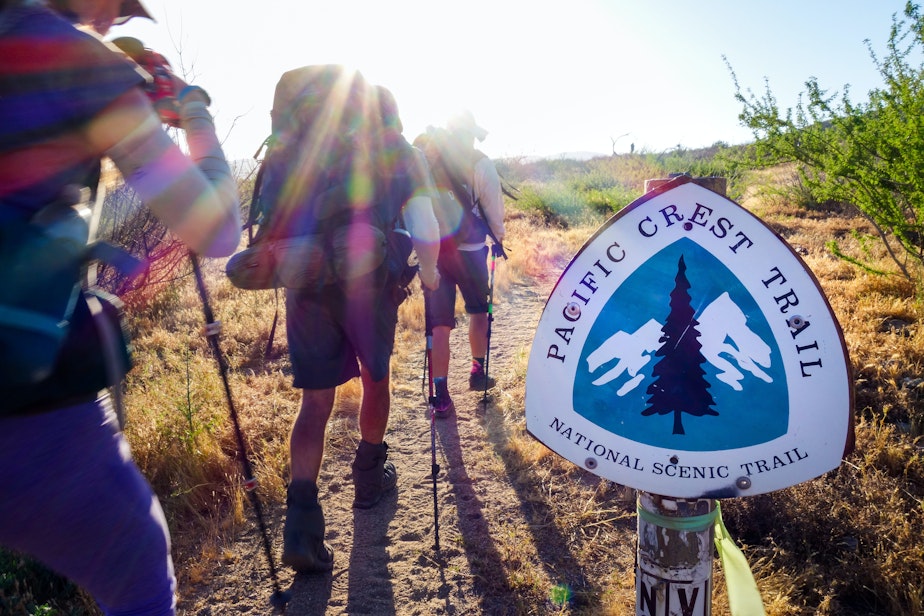From wildfires to tropical storms, Pacific Crest Trail hikers face increasing climate extremes

Every year, thousands of ambitious outdoors-people apply for a long-distance permit to hike the more than 2,600-mile Pacific Crest Trail, spanning from the U.S.-Mexico border to British Columbia.
For those who take the traditional route, starting in the Southern California desert and heading North through forestlands, it’s roughly this time of year — late summer — when they arrive in Washington state.
Their feet and calves aren’t the only things burning when they get here.
A changing climate and increasingly frequent wildfires are threatening the present — and future — of that journey.
Record snowfall in the Sierras had many running into a “wall of snow” in the spring.
Sponsored
Tropical storm Hilary washed out some trail sections for late-season desert hikers. Recent wildfires across the West Coast have thru-hikers up against smoke and closures – particularly in Washington’s North Cascades.
Along the way, many hikers lean on so-called “trail angels”: People who help them as they make the journey from one end of the Pacific Crest Trail to the other. A trail angel might set beverages out for hikers to take, give them a ride, or even open their homes to hikers who need a break.
"Trail angels have had to become travel agents," said Mary Williams, a trail angel living in the Central Washington town of Mazama.
Williams said that this year, hikers have faced particularly difficult conditions.
Fires near Stevens Pass now have people stuck deciding between a 101-mile detour away from the flames, flipping back down to California, or packing up and going home.
Sponsored
Earlier on, some hikers had to flip their trips, starting in British Columbia instead of Southern California due to the record-breaking snowfall in the Sierras.
"This has definitely been a crazy year," said Scott Wilkinson, content development director at the Pacific Crest Trail Association. "For perhaps one of the first times ever, the majority of northbound thru-hikers, because most people do travel from south to north, actually had to skip the Sierra Nevada."
Wilkinson said this may be the first time that's happened, but it’s unlikely to be the last.
"The days when you can continuously hike every mile of the trail from one end to the other may well be gone. Or at least we may not see that for quite a long time," he said. He suggests that instead, people will switch to hiking the trail in sections, jumping between areas depending on local weather and conditions.
"If I had to choose between a thru-hike, and what I would call cherry-picking the best of the spots…I would pick cherry-picking," said Scott Vanderlip, a recent Pacific Crest Trail thru-hiker turned trail angel in the central Sierras.
Sponsored
Vanderlip said that even during typical years, the schedule required to hike the full trail from South to North requires a hiker to endure "the worst of everything”: snow in the Sierras, heat in Northern California, and bugs in Oregon.
Choosing to jump between sections allows hikers to enjoy the hike when the weather and conditions are at their best.
"The trail is always going to be there, we hope, and it will always be a spectacular experience," Wilkinson said. "There are always going to be wonderful opportunities, and the trail experience is transformative, no matter where it is and how long it is.





